| PF Home | Prairie Grass | Native | Site Map | Planting Tips | Butterflies | Sales |
By Prairie Frontier
These graphic files are large and will load slowly due to size. Patience please.
NOTE: Click on thumbnail images to view a larger image.
| Lemon Mint Monarda citriodora This native annual reseeds itself, grows 1'- 3' tall and emits a sweet citrus aroma. This member of the mint family has lavendar and white blossoms that sit atop a square stem with fine hairs. Lemon mint prefers sun to partial shade, drier soils and is a nice nice addition to any garden. |
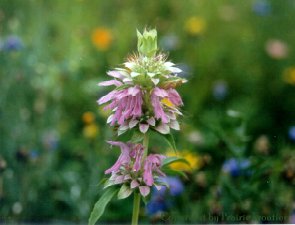 |
|
| Lobelia, Great Blue Lobelia siphilitica The deep blue flowers alternating at the top of the stalks are highly adapted for insect pollination. The unbranched stems of this plant grow to 3' tall in sun or partial shaded conditions. It prefers moist soils and can be seen in open areas along lakes and streams or wet prairies. In average soils occasional watering may be needed and mulching will help. |
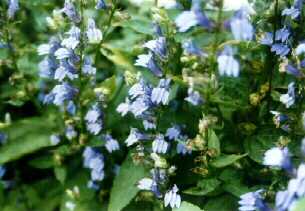 |
|
| Lobelia, Pale Spiked Lobelia spicata A native perennial that is smaller than most other lobelias. Less than 1/2" bluish-white flowers alternate along the upper part of the stem. Growing less than 3' tall, this flower blooms mid-spring to mid-summer in moist to dry prairies. |
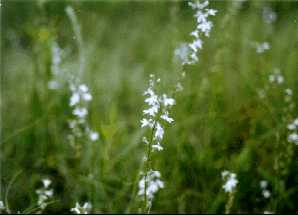 |
|
| Lupine Lupinus perennis These blue-violet dense spikes bloom May thru June in open woods and fields, many times in sandy areas. Growing 1'-2' tall this native perennial has hairy stems and a leaf that has 7-11 small leaves radiating from a center point. Lupine blooms mid-spring to mid-summer and is a larval food source for the endangered Karner Blue butterfly. |
 |
|
| Marsh Cinquefoil Potentilla palustris This member of the Rose family grows 8"-24" in wet meadows, bogs and along streambanks. The blue-green leaves are feather-divided and the blossoms are purple. Blooms June to August. |
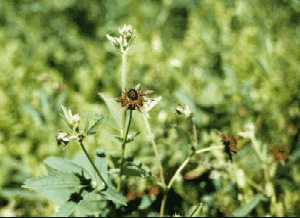 |
|
| Milkweed, Common Asclepias syriaca A native perennial that produces sweet-smelling lavendar flowers in June thru August. A Monarch butterfly favorite where many times you can spot the familiar striped Monarch caterpillar eating it's leaves. This plant can become aggressive and should be planted with other grasses and flowers. It grows to heights of 2'- 4' in full sun or light shade. |
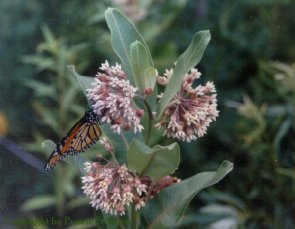 |
|
| Milkweed, ShowyAsclepias speciosa An outstanding native plant for attracting butterflies as well as a food source for the Monarch Butterfly. Grows 3'-4' in height, in medium to dry soils and in full sun. Pioneers used the fluff from pods of the plant for cushions. |
| [Native List] | [Homepage] | [Mixes] | [Planting Tips] | [Sales] |
 |